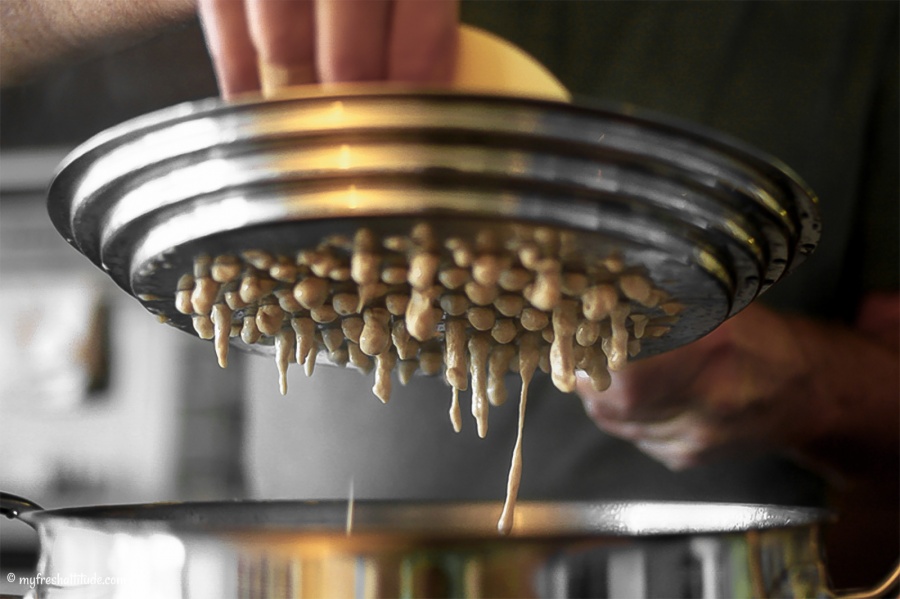
Spätzli
I never encountered this classic Germanic dish until I came to Switzerland. But once I tried them, I was hooked.
Spätzli probably originated from Bavaria or parts of Tirol in Austria. The traditional method of making them involved putting a bit of batter on a damp cutting board and cutting strips of dough into the boiling water. It’s a fabulous method – but a bit time consuming.
The Swiss version relies on using a sieve-like device that sits on a pot. The batter is placed onto the sieve and pushed through the holes and into the boiling water below. This
Subscription Required For This Content
I never encountered this classic Germanic dish until I came to Switzerland. But once I tried them, I was hooked.
Spätzli probably originated from Bavaria or parts of Tirol in Austria. The traditional method of making them involved putting a bit of batter on a damp cutting board and cutting strips of dough into the boiling water. It’s a fabulous method – but a bit time consuming.
The Swiss version relies on using a sieve-like device that sits on a pot. The batter is placed onto the sieve and pushed through the holes and into the boiling water below. This method produces smaller, button-like spätzli that Swiss call Knöpfli (small buttons).
The conventional mixture falls somewhere between a batter and a dough in terms of consistency. It is usually made with eggs, milk and flour – sometimes chestnut flour.
My dairy-free, egg-free version is simple to prepare…and deliciously light. The recipe can be easily adapted to include different flavors by adding chopped herbs, spices or different flours.
I enjoy the base version simply tossed in some olive oil and dusted with chopped parsley (or other seasonal herbs). Serve alone as a starter or with roasted vegetables and mushrooms for a more substantial meal. Cooked spätzli can be refrigerated for 3-5 days. Gently reheat in a pan with a bit of water.
Yield: Makes about 6-8 servings